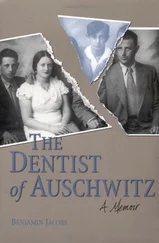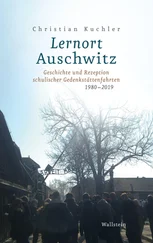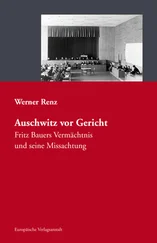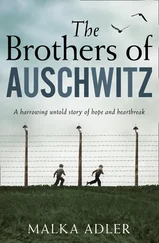This was the construction of the prisoner-of-war camp for 100,000 prisoners. Himmler had already talked about this during our tour and had given a rough indication of the site. The Gauleiter raised objections and the administrative president tried to put a stop to it on account of the lack of water and drainage difficulties. Himmler dismissed these objections with a smile: “Gentlemen, it will be built. My reasons for constructing it are far more important than your objections. Ten thousand prisoners are to be provided for the IG Farben Industrie according to their requirements and to the progress made in the construction work. Auschwitz concentration camp is to be expanded to hold a peacetime establishment of 30,000 prisoners. I intend to transfer here afterward important branches of the armaments industry. The space for this is to be kept clear. In addition there will be the agricultural research stations and farms!” And all this was to be accomplished, when there was already an acute shortage of building materials in Upper Silesia. The Gauleiter drew Himmler’s attention to this and received the reply: “What have the SS requisitioned the brickworks for, and the cement factory, too? They will have to be made more productive, or the concentration camp will be forced to start some undertakings on its own account!
“Problems of water supply and drainage are purely technical matters, which the specialists have to work out, but they cannot be raised as objections. Every means will have to be taken to accelerate the construction work. You must improvise as much as possible, and any outbreak of disease will have to be checked and ruthlessly stamped out!
“The delivery of drafts to the camp, however, cannot, on principle, be halted. The actions, which I have ordered my security police to undertake, must go on. I do not appreciate the difficulties in Auschwitz.” Then turning to me, he said: “It is up to you to manage somehow.”
Shortly before his departure Himmler found time to pay a visit to my family and gave me instructions to enlarge the house in view of its use as an official residence. He was once more genial and talkative, in spite of his abruptness and irritation during our conversations a little earlier.
Glücks had been shocked by the way I had repeatedly raised objections to the pronouncements of the Reichsführer SS. He, too, could not help me. Nor was he able to arrange for any assistance by transferring personnel and so on. He had no better officers or junior officers available and he could not expect other camp commandants to exchange good material for bad.
“You won’t find it so hard and you’ll manage all right,” were the words with which my interview with my superior officer ended….
In the summer of 1941, Himmler summoned me to Berlin to inform me of the fateful order that envisaged the mass extermination of Jews from almost every part of Europe, and which resulted in Auschwitz becoming the largest human slaughterhouse that history had ever known….
My next meeting with Himmler was in the summer of 1942 when he visited Auschwitz for the second and last time. The inspection lasted for two days and Himmler examined everything in great detail. There were present, among others, Gauleiter Bracht, Obergruppenführer Schmauser, and Dr. Kammler.
After his arrival in the camp we went to the SS officers’ mess where I had to explain the layout of the camp with the aid of maps. Then we went to the architects’ office where Kammler produced designs and models with which to explain the construction work which had been proposed or which was already under way, but he did not pass in silence over the difficulties which stood in the way of these plans or which might even prevent their realization. Himmler listened with interest, inquired about some technical details, and expressed agreement with the scheme as a whole, but he showed no concern over the difficulties which Kammler had repeatedly brought to his notice. Afterward a tour was made of the whole of the camp’s sphere of interest. First an inspection was made of the agricultural areas and the work of reclamation, the building of the dam, the laboratories and plant-breeding establishments in Raisko, the stockbreeding centers and the tree nurseries. Then Birkenau was visited, including the Russian camp, the gypsy sector, and also a Jewish sector. He then climbed the gate tower and had the different parts of the camp pointed out to him and also the water drainage systems which were being built, and he was shown the extent of the proposed expansion. He saw the prisoners at work and inspected their living quarters and the kitchens and the hospital accommodation. I constantly drew his attention to the defects in the camp, and he saw them as well. He saw the emaciated victims of disease (the causes of which were bluntly explained by the doctors), he saw the crowded hospital block, he learned of the mortality among the children in the gypsy camp, and he saw children there suffering from the terrible disease called noma. He also saw the overcrowded huts and the primitive and insufficient latrines and washhouses. The doctors told him about the high rate of sickness and death and, above all, the reasons for it. He had everything explained to him in the most exact manner and saw it all precisely as it really was, and he remained silent. He took me back to Birkenau furious at my perpetual complaints of the miserable conditions in the camp and said: “I want to hear no more about difficulties! An SS officer does not recognize difficulties; when they arise, his task is to remove them at once by his own efforts! How this is to be done is your worry and not mine!” Kammler and Bischoff were told much the same sort of thing.
After the inspection in Birkenau, he watched the whole process of destruction of a transport of Jews, which had just arrived. He also spent a short time watching the selection of the able-bodied Jews, without making any objection. He made no remark regarding the process of extermination, but remained quite silent. While it was going on he unobtrusively observed the officers and junior officers engaged in the proceedings, including myself.
He then went on to look at the synthetic rubber factory. He inspected the buildings just as carefully as he did the prisoners and the work they were doing. He made inquiries concerning the health of these prisoners. Kammler then heard him say: “You complain about difficulties, but look at what IG Farben Industrie have done in one year, and under similar difficulties!” He never mentioned the quotas, or the more favorable opportunities, or the thousands of skilled workers (about 30,000 at that time) which IG Farben Industrie had at their disposal. Himmler made inquiries concerning the working capabilities of the prisoners, and received evasive replies on the part of the IG Farben Industrie. Whereupon he told me that I must by all means increase their efficiency! How this was to be done was, once more, to be my affair, in spite of the fact that earlier he had heard from the Gauleiter and the IG Farben Industrie that in a short time they would have to reckon with a serious cut in rations issued for prisoners, and that he had also seen for himself the general condition of the prisoners.
From the synthetic rubber factory we went to the sewer gas installation, where progress had stopped owing to the impossibility of overcoming the shortage of materials.
It was one of the worst spots in Auschwitz, and it affected everyone. The drainage water from the base camp was discharged, without any purification worth mentioning, directly into the Sola. The population was constantly exposed to the danger of infection, because of the diseases which were always rampant in the camp. The Gauleiter described the position with great clarity, and asked in unmistakable terms for assistance. “Kammler will apply all his energies to the problem” was Himmler’s reply.
Читать дальше












